
Discoveries:
How was the site located?
It all started when David was looking for Roman material along the banks of the river
Avon and noticed what he thought might be a track-
Eventually and after many letters to the land owners, David was walked around the
site by an elderly local man who looks after the grounds. He was told by the grounds
man that he was not the first archaeologist to ask to see the site, and that a short
while before the great Mike Parker Pearson (Sheffield University Riverside Project)
-
Unlike Mike, and the great men of archaeology before him who had written off the site out of hand, David did something that the others before him had not. He asked the local man, if he were looking, where would he look. This led them to the site of two springs where a test pit produced bags of Mesolithic finds. David is a very modest chap who values everyone’s opinion and who listens. Clearly this lack of arrogance has paid off in this case.
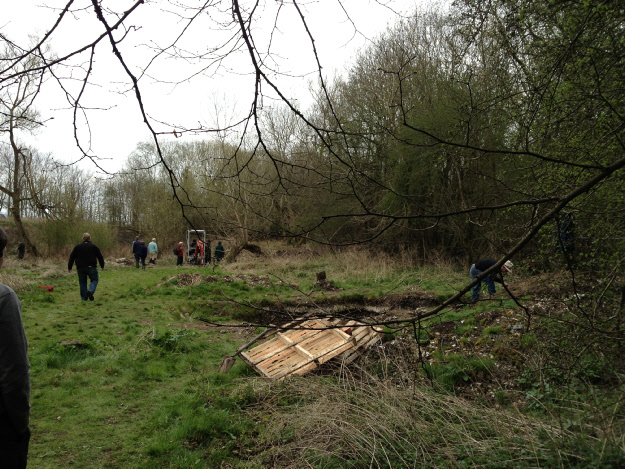
The site consists of two spring fed ponds, the upper pond which is currently dry and a lower which is still full of water. The water table is currently very low, which is good news for digging the higher spring.
The entire area shown left would be under water if we had a very wet season.
So it would have been in the period 8500 years ago which is when some of David's datable finds point.
Finds of such quantity and ‘brand new quality indicate that these flints were not simply lost or dropped, but made deliberately as votive offerings. More on that thought later, but clearly this may be Britain’s first sacred pool.
There is also a large quantity of Aurochs bones which tests have shown were cooked, actually roasted over a BBQ of wood and charcoal. This is evidence not only of Britain's first hot meal and first beef BBQ but also of feasting on a large scale for a lot of people upon a sacred animal.
Locals say that the spring does not freeze in winter, and if verified, it may be that the spring has thermal properties which attracted wild animals and people to it in winter as ‘the place of choice to be’, and that this marked it out as somewhere very special to our ancestors.
Let me return to that thought which I asked you to hold on to about votive offerings. I put two and two together and asked the team about the continuity of belief involved. We know for a fact that the Celts (and so also the Druids) made offerings or gifts to the spirit / goddess of lakes and rivers. The belief at the time (Bronze to Iron Age) was that there are two realms, with water being the gateway between them. Tradition suggests that no gift could be passed or boon granted from the other realm into ours unless a gift be first given.
Could it be that by the depositing of flints unused into the spring that our Mesolithic ancestors were following the same practice for the same reasons and that this tells of a belief eventually held by Druids having its origins 6000 years earlier. The answer, yes it would very much seem so!
Some Druid beliefs may be 8500 years old or more. That will upset some modern historians who have pinned their flags to the mast of no insular or pre iron age origins to Druid belief. I can’t say that I feel any sympathy however. Our legends have always pointed to earlier roots to our tradition.
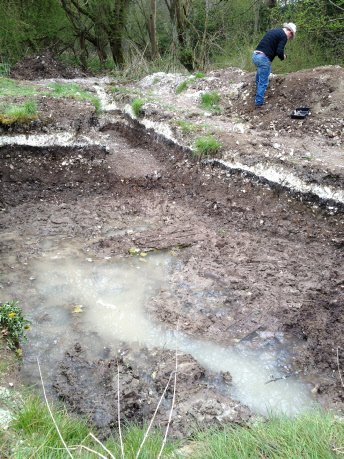
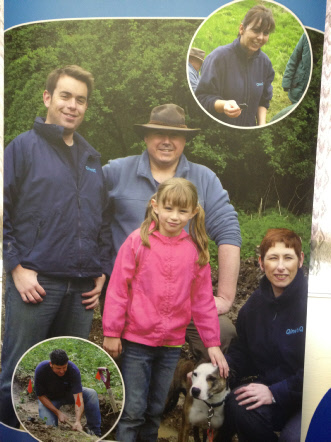
The local people who have helped this dig all along have also been responsible for some of its most amazing finds. One such person is the little girl wearing ink in the picture left.
Directed to look through the spoil heap (away from nasty sharp flints and boggy trenches) she diligently sifted through the leftovers of the trench. Hours later when someone asked her what she had found, she held up her bag and declared that she had found two toys!
Astonished archaeologists rushed over to find her presenting them with two Mesolithic flint ducks (they could also be hares). Britain's earliest toys!
There is no end to the wonders!
Even whilst the exhibition continued news of new finds was surfacing, wood from a possible pontoon or jetty into the spring and flints that could suggest a date of 7500 BC for the site.
So, until I can present to you my videos from David and his team I hope that I have said enough to indicate just how important this dig is to our understanding.
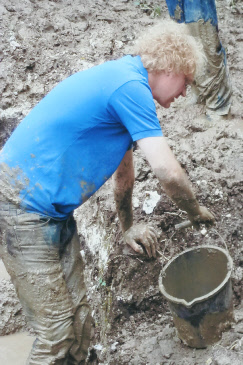
Above, David at the dig site.
This picture is one of the dig teams photo’s...a modest man and a hero of our time.
I will leave you with a theory that literally took shape as Prof. Tim Darvil and David exchanged ideas in the middle of David's second lecture at Amesbury Museum:
The heated pool attracted Aurochs. The Aurochs attracted people. Both Aurochs and springs being sacred, this encouraged ritual offerings and feasting at the site along with regular settlement over thousands of years. This became a sacred location which in the fullness of time led to Stonehenge being built nearby.
Is this sacred spring the reason for Stonehenge being located on Salisbury plain?
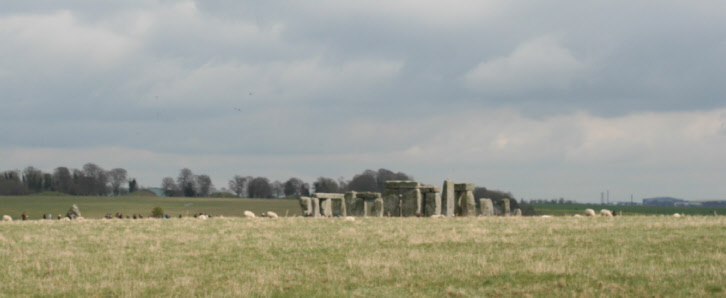
So far as I am aware I am the first Druid to visit the spring. It is a beautiful and spiritual place. Several of the archaeologists have felt deeply moved by it and have even sung to the spirit of the spring, such is her sense of presence.